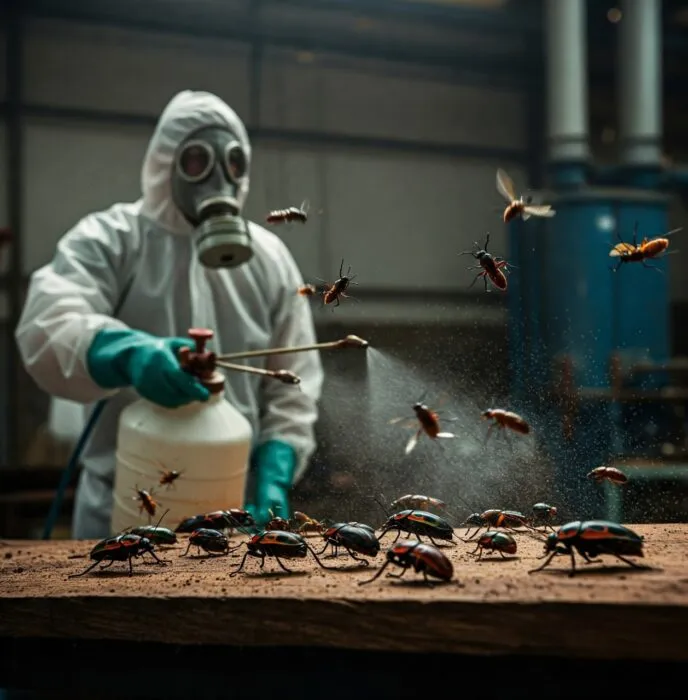Disinsection
Disinsection is a set of services designed to destroy insects (cockroaches, ants, bedbugs, fleas, mosquitoes, flies, lice, moths, wasps, etc.) and other arthropods (ticks, spiders, etc.) that have epidemiological and sanitary – hygienic significance.
Cockroaches
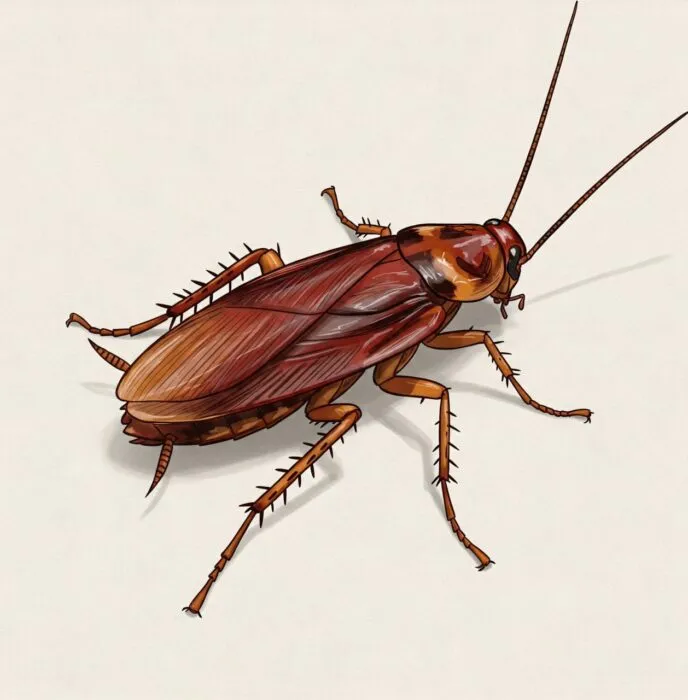
The life of cockroaches closely intersects with human life, causing discomfort and significant problems.
Cockroaches are carriers of many infectious diseases:
- dysentery, affecting the gastrointestinal tract and causing intoxication
- salmonellosis (acute intestinal infection)
- infectious hepatitis, accompanied by liver inflammation
- poliomyelitis – a severe form of infantile paralysis
- tuberculosis – an infectious lung disease
- meningitis – inflammation of the brain
- diphtheria, causing inflammation of the larynx and damage to the nervous system
- etc
Cockroaches live in warm rooms, since they cannot be at sub-zero temperatures.
They also cannot live without water, maximum three days.
Comfortable living conditions for cockroaches are:
- a warm room
- the presence of water
- the presence of fat deposits
All these factors are inherent in kitchens and food production areas.
Unsanitary conditions and negative sanitary and epidemiological conditions are comfortable conditions for cockroaches to live in.
What is unsanitary conditions and negative sanitary and epidemiological conditions?
- the presence of fatty deposits
- food residues
- the presence of garbage
- disorderly commercial kitchens
Cockroach habitat:
- kitchen stoves
- deep fryers
- ovens
- cafe machines and vending machines
- corrugated packaging is a favorite place for cockroaches to live
In some cases, they move from one object to another in corrugated packaging.
Cleanliness is the main guarantee of success against cockroaches.
What does the fight against cockroaches look like?
- departure to the object
- monitoring
- we find the areas where cockroaches live
- we choose the method of control according to the requirements of Pest Control and the HACCP system
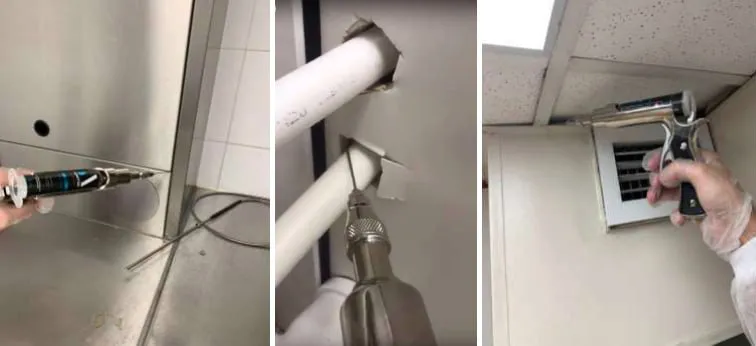
Flies
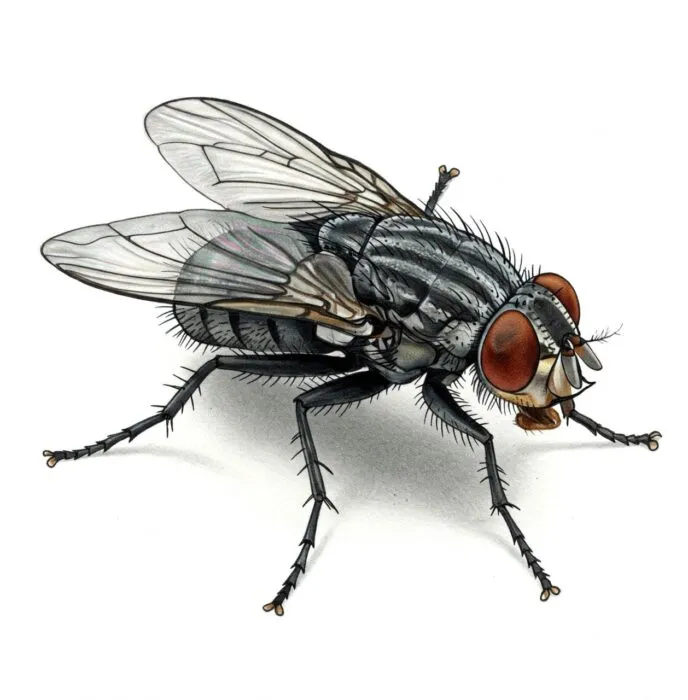
Flies are flying nosed creatures that cause significant harm to humans such as:
- dysentery is an infection that affects the entire gastrointestinal tract and especially affects the large intestine, causing prolonged diarrhea. Therefore, a person often experiences dehydration, which is deadly at any age
- typhus (abdominal) – a person has a high fever, general intoxication of the body. The disease affects the lymphatic system and small intestine
- cholera is an acute intestinal infection. The cholera vibrio affects the small intestine, leading to vomiting, diarrhea and severe dehydration
- diphtheria is the most dangerous infectious disease. It affects all systems – from the cardiovascular to the excretory, nervous and respiratory. More often, mortality from diphtheria is observed in young children
- tuberculosis is an infectious disease that, if left untreated, becomes chronic and leads to death
- anthrax – although outbreaks of the disease are not recorded now, such a possibility in the future cannot be ruled out. This fatal disease affects internal organs and the lymphatic system
- etc.
The habitat of flies is the waste of human and animal life. The main component of the habitat of flies on objects is garbage cans. The main problem is the location of garbage cans near objects, especially food.
Methods of controlling flies:

- departure to the object
- monitoring
- identifying the problem
- finding areas where flies live
- choosing a method of control according to the requirements of Pest Control and the HACCP system

Moth
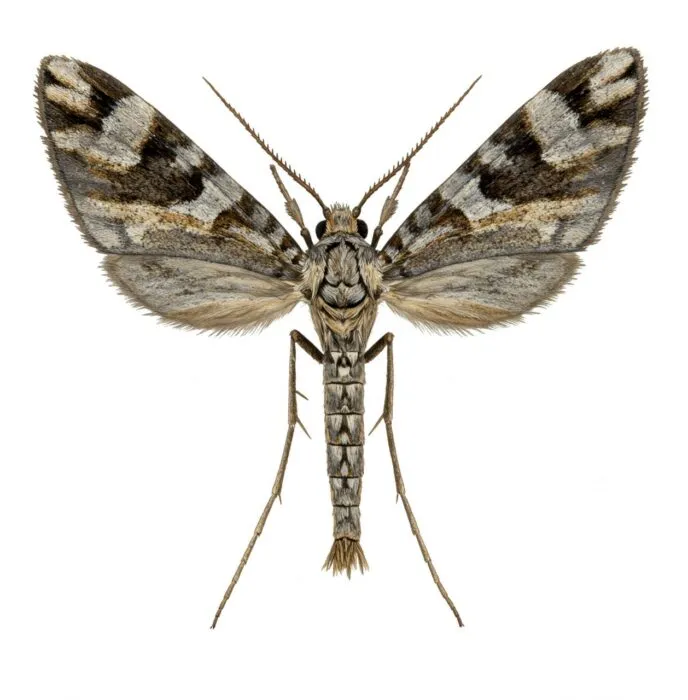
A moth is a pest that is always near a person.
Habitats of moths:
- apartments
- private houses
- food production facilities
Moths cause harm to people such as spoilage of things and food products.
Method of controlling moths:
- departure to the object
- monitoring
- identifying foci of infection
- effective destruction
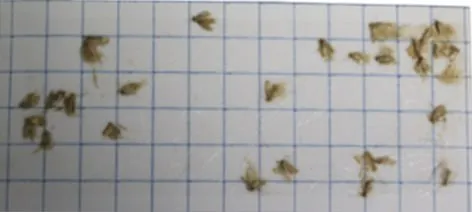
We also destroy ants, bedbugs, fleas, mosquitoes, lice, wasps, ticks, spiders.
